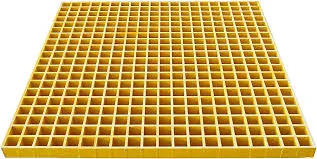
-
 Afrikaans
Afrikaans -
 Albanian
Albanian -
 Amharic
Amharic -
 Arabic
Arabic -
 Armenian
Armenian -
 Azerbaijani
Azerbaijani -
 Basque
Basque -
 Belarusian
Belarusian -
 Bengali
Bengali -
 Bosnian
Bosnian -
 Bulgarian
Bulgarian -
 Catalan
Catalan -
 Cebuano
Cebuano -
 China
China -
 China (Taiwan)
China (Taiwan) -
 Corsican
Corsican -
 Croatian
Croatian -
 Czech
Czech -
 Danish
Danish -
 Dutch
Dutch -
 English
English -
 Esperanto
Esperanto -
 Estonian
Estonian -
 Finnish
Finnish -
 French
French -
 Frisian
Frisian -
 Galician
Galician -
 Georgian
Georgian -
 German
German -
 Greek
Greek -
 Gujarati
Gujarati -
 Haitian Creole
Haitian Creole -
 hausa
hausa -
 hawaiian
hawaiian -
 Hebrew
Hebrew -
 Hindi
Hindi -
 Miao
Miao -
 Hungarian
Hungarian -
 Icelandic
Icelandic -
 igbo
igbo -
 Indonesian
Indonesian -
 irish
irish -
 Italian
Italian -
 Japanese
Japanese -
 Javanese
Javanese -
 Kannada
Kannada -
 kazakh
kazakh -
 Khmer
Khmer -
 Rwandese
Rwandese -
 Korean
Korean -
 Kurdish
Kurdish -
 Kyrgyz
Kyrgyz -
 Lao
Lao -
 Latin
Latin -
 Latvian
Latvian -
 Lithuanian
Lithuanian -
 Luxembourgish
Luxembourgish -
 Macedonian
Macedonian -
 Malgashi
Malgashi -
 Malay
Malay -
 Malayalam
Malayalam -
 Maltese
Maltese -
 Maori
Maori -
 Marathi
Marathi -
 Mongolian
Mongolian -
 Myanmar
Myanmar -
 Nepali
Nepali -
 Norwegian
Norwegian -
 Norwegian
Norwegian -
 Occitan
Occitan -
 Pashto
Pashto -
 Persian
Persian -
 Polish
Polish -
 Portuguese
Portuguese -
 Punjabi
Punjabi -
 Romanian
Romanian -
 Russian
Russian -
 Samoan
Samoan -
 Scottish Gaelic
Scottish Gaelic -
 Serbian
Serbian -
 Sesotho
Sesotho -
 Shona
Shona -
 Sindhi
Sindhi -
 Sinhala
Sinhala -
 Slovak
Slovak -
 Slovenian
Slovenian -
 Somali
Somali -
 Spanish
Spanish -
 Sundanese
Sundanese -
 Swahili
Swahili -
 Swedish
Swedish -
 Tagalog
Tagalog -
 Tajik
Tajik -
 Tamil
Tamil -
 Tatar
Tatar -
 Telugu
Telugu -
 Thai
Thai -
 Turkish
Turkish -
 Turkmen
Turkmen -
 Ukrainian
Ukrainian -
 Urdu
Urdu -
 Uighur
Uighur -
 Uzbek
Uzbek -
 Vietnamese
Vietnamese -
 Welsh
Welsh -
 Bantu
Bantu -
 Yiddish
Yiddish -
 Yoruba
Yoruba -
 Zulu
Zulu
Tips for choosing the right cutting drill bit for your project requirements
Cutting drill bits play a crucial role in various industries and are essential tools for achieving precision and accuracy in drilling operations. These specialized cutting tools come in a variety of shapes, sizes, and materials to accommodate different drilling needs and materials. Whether you are working with wood, metal, plastic, or other materials, choosing the right cutting drill bit is essential for achieving optimal results.
One of the key factors to consider when selecting a cutting drill bit is the material it is made of. Different materials offer varying levels of durability, hardness, and heat resistance, which can impact the performance and longevity of the drill bit. Common materials used for cutting drill bits include high-speed steel (HSS), cobalt steel, carbide, and diamond. HSS drill bits are versatile and cost-effective, making them ideal for everyday drilling tasks. Cobalt steel drill bits are known for their superior heat resistance and durability, making them suitable for drilling tough materials like stainless steel. Carbide drill bits are highly durable and are preferred for drilling hard materials like concrete, ceramic, and metal. Diamond drill bits, on the other hand, are the most durable and can cut through the hardest materials, such as glass, tiles, and gemstones.
Another important factor to consider when choosing a cutting drill bit is the type of cutting edge or tip it has. Common types of cutting edges include twist, spade, auger, Forstner, and hole saws. Twist drill bits are the most commonly used and feature spiral flutes that help to remove debris and facilitate chip evacuation during drilling. Spade drill bits have flat, spade-shaped tips that are ideal for drilling large-diameter holes in wood and plastic. Auger drill bits have a screw-like design that helps to pull the bit into the material and remove material efficiently. Forstner drill bits are designed for drilling flat-bottomed holes with clean edges, making them ideal for woodworking projects. Hole saws are specialized drill bits that are used for cutting large-diameter holes in materials like wood, metal, and plastic.
cutting drill bit

In addition to the material and type of cutting edge, it is important to consider the size and shape of the cutting drill bit. Drill bits come in a wide range of sizes and shapes, including standard twist drill bits, step drill bits, countersink drill bits, and specialty drill bits for specific applications. Choosing the right size and shape of the drill bit is critical for achieving accurate and precise drilling results.
In conclusion, cutting drill bits are essential tools for drilling operations in various industries. By considering factors like the material, type of cutting edge, size, and shape of the drill bit, you can select the right tool for your drilling needs. With the right cutting drill bit, you can achieve precise, clean, and efficient drilling results in a wide range of materials.
Latest news
-
Oblate Tanks: Space-Saving, Durable Liquid Storage SolutionsNewsAug.27,2025
-
High-Performance Piping System Solutions for Industry & Commercial UseNewsAug.26,2025
-
Precision Fittings: Durable & Reliable Industrial & Plumbing SolutionsNewsAug.25,2025
-
Practical Steps: Unlock Success with Our Proven GuidesNewsAug.24,2025
-
Transport Tanks: Safe, Durable & Efficient Liquid HaulingNewsAug.23,2025
-
High-Quality Piping Systems for Efficient Flow & DurabilityNewsAug.22,2025









